Many among us, ourselves included, can be forgiven for spending a few wistful moments during the more tedious passages in our lives wondering what it might be like to wander exotic locales, rubbing shoulders with cultured types all while sipping fine wines over plates artfully decorated with exquisite regional specialties. When we come out of such reveries, we often try to convince ourselves that in reality this kind of life would be too much of a good thing, that after the novelty wore off it would be tiresome and, in all likelihood, downright unpleasant. Sadly, if the new book from Mike Desimone and Jeff Jenssen, aka The World Wine Guys, is anything to go on, it really is as wonderful as you’d imagine.
In fact, while there is much to be envious of in the global boozy peregrinations of the authors, it is only fair to say that a book of such encyclopedic detail represents years of yeoman work and a serious commitment to research. One may joke about how challenging it would be to have to drag oneself to yet another private tasting of select vintages, but to have written a comprehensive guide to the enormous selection of wines from these diverse regions across three continents, is tantamount to a life’s work, and deserves to be acknowledged as such. Inclusion on your holiday gift list would be fine way of doing so, as might searching the interwebs for whichever of the book’s wines you can lay your hands on to enliven your Yuletide festivities.
As we noted in a recent post, wine has lately become a truly global beverage. From the tropical Brazilian Highlands to New Zealand’s snowy Southern Alps, and from the dusty Patagonian steppe to the foot of Table Mountain, grapes are being grown and turned into a staggering variety of remarkable wines. In fact, this is hardly a recent development, since the root stock of some of South Africa’s most noble vineyards predates anything in Europe or anywhere else, and Argentina and Chile have been making wine since the 16th century. However, for much of this time, neither production level nor the quality of these wines made them suitable for export, so it is only comparatively recently that they have become available to us in the rest of the world. A phenomenon this book is the first of its kind to celebrate.
Along with brief histories of the wineries and tasting notes to accompany their more recent vintages, the authors also feature charming vignettes from a selection of the winemakers, as well as some occasionally dodgy-sounding recipes you’re advised to pair with said wines. If this last inclusion is perhaps a step too far in a book already over-packed with information, we really commend the authors for making room for these first person narratives from the winemakers themselves.
Any regular readers of our blog would know that our preference is to wrap the food we write about in florid tales of our personal travels and anecdotes of the fascinating variety of folks we encounter. Many times there is only the haziest connection between the trip and the dish, but while Desimone and Jenssen do an excellent job of highlighting Uruguayan vineyards, we feel that, in this area, we have something legitimate to add. So, allow us, if you will, a moment to recount our visit to the Bouza winery, a boutique, family-owned vineyard sitting very contentedly in the lush pastureland surrounding the Uruguayan capital a couple of years ago.
Like the owners of many South American wineries, the Bouza family are but a pair of generations removed from their Galician immigrant founders who brought their know-how and passion for the grape across the Atlantic. Hidden among palmeras, the entrance to the Bouza property is easy to overlook, which would be a pity since you’d miss a charming bucolic vale replete with herds of woolly sheep, acre upon acre of orderly vines and the mock-French chateau stylings of the winery’s main facility surrounded, rather ostentatiously, by a large collection of highly-polished vintage motors. Visits to the vineyard must be arranged in advance and, though our eager guide’s English was vastly superior to our pidgin Spanish and especially after the tasting there was much goodwill and enthusiasm from both sides, communication was still rather hard going at times.
A tour of the vines, the barrel-room, and an extensive tasting of Bouza’s wares, was concluded with a typically meaty, but considerably refined, lunch in the winery restaurant where our only fellow-diners were a pack of purple-nosed French businessmen and their Uruguayan counterparts getting stuck in to what appeared, from the empties littering their table, to be an entire case of the house tipple. Returning to Montevideo that evening, full of wine and enthusiasm for this country, we strolled the malecon accompanied by hobbyist fishermen and professional dog-walkers festooned with leashes like spiders-legs, and watched the setting sun gild the city’s waterfront as it slid into the muddy ripples of the Rio de la Plata.
Even prior to this excursion, we were (and still remain) enchanted by Uruguay. Our trip offered a brief and envious window into the working lives of Desimone and Jenssen who seem to share our admiration for this part of the world. Like them, we highly recommend Uruguay, its food and its wines, especially the 2007 Bouza Tannat Tempranillo blend, a pair of which have been snoozing in our very own micro-cellar since we returned, awaiting just the proper occasion.
Hardcover, 592 pages
Sterling Epicure
$24.95 / CAN $29.95
Shop on Amazon
Cno. de la Redención 7658 bis
Tel.: (598) 2323 7491
Tel.: (598) 2323 3872
Tel. Restaurant: 2323 4030
Montevideo – Uruguay
www.bodegabouza.com
visitas@bodegabouza.com
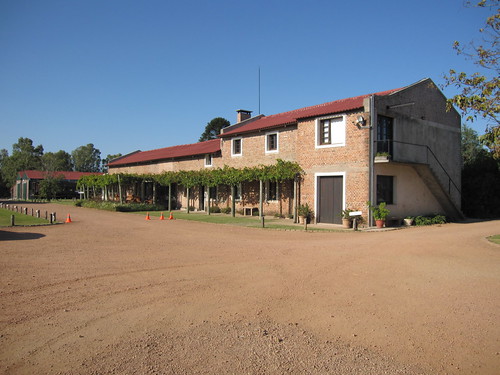

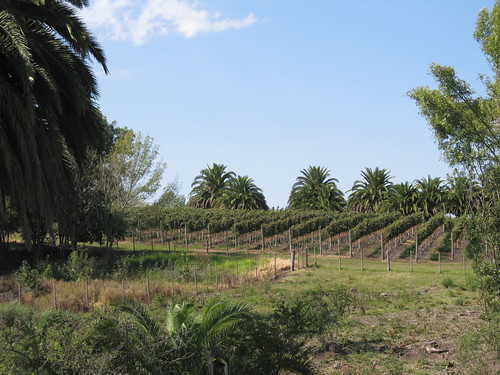
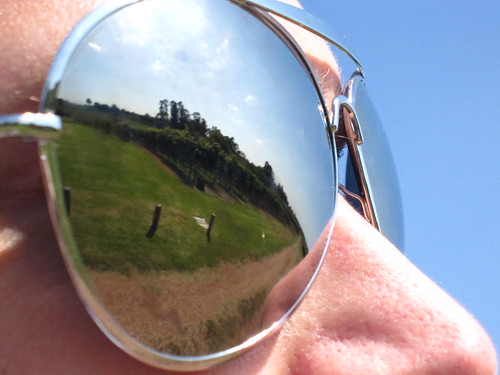
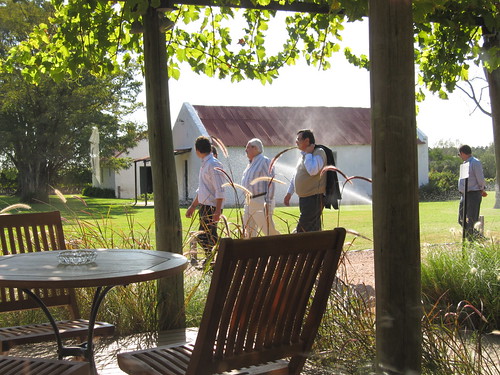


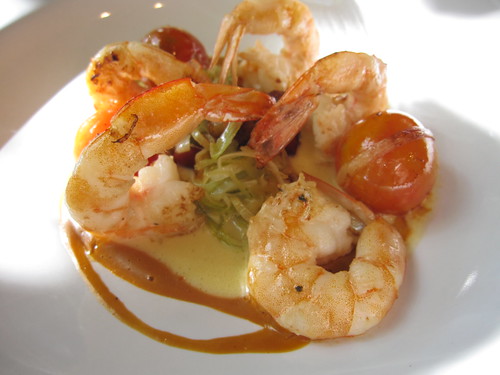

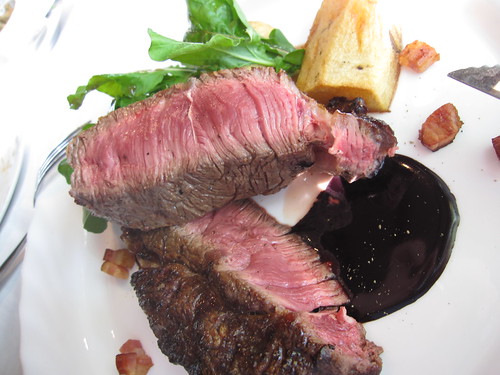
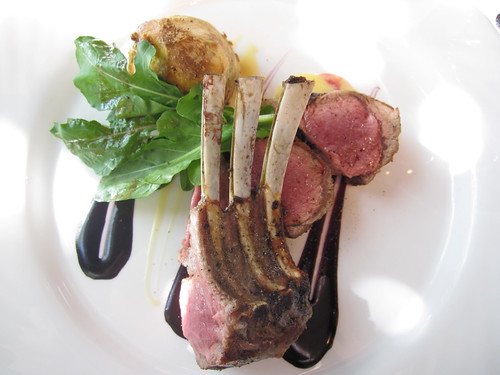

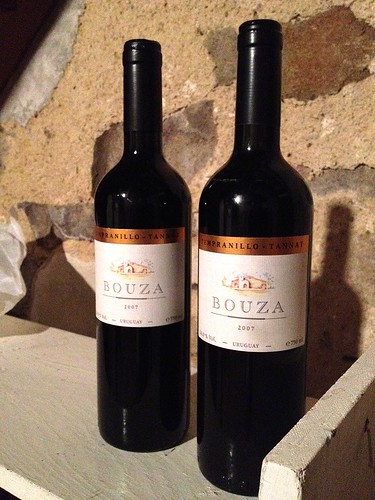

We have some great wine shops here in L.A., and perhaps one of them will carry a Uruguayan wine on the shelves. Very true about them being hard to find. People rarely mention them, but you’re a trusted source, so why not give one a try?
Good food, wine and travel can never be too much of a good thing — or at least I’d like to find out and declare it for myself! 🙂
P.S. Book sounds like a good holiday gift for the wine enthusiast.
@TDD: we have actually found Bouza wines in NYC, but they were never seen again afterwards. Best of luck with your search. We’ve yet to find any Brazilian wines. That’s the next thing to try!
@Joan: You’re right. I’d appreciate the chance to find out if it’s not really all that much fun! And, a good gift indeed for the wine-sipping travel enthusiast in your life!
I’ve never tried a Uruguayan wine, despite living in neighboring Argentina. Apparently, Argentine vinos don’t like to share shelf space with Chilean and Uruguayan wines, because I never see either here. I found your note about the availability of Uruguayan wines quite interesting. Why are they more readily available in Canada than in the U.S.?
@Katie: welcome back, great to hear from you! Your experience sounds rather similar to many European countries where it’s impossible to find any foreign wines due to the level of local production, not to mention the general chauvinism towards their own bottles. What’s probably most interesting about Uruguayan wines vs those of anywhere else is the emphasis on the tannat grape, which is found very few other places except the Madiran region of south-west France. As for availability, I don’t know for certain why Uruguayan wines aren’t readily available in the US, but can be found in Canada and the UK, but if I had to guess at the reason, it would be the opposite of why you can’t find it in Argentina. I.e. that neither of those countries produce any quantity of wine, so there is little competition from local plonk.